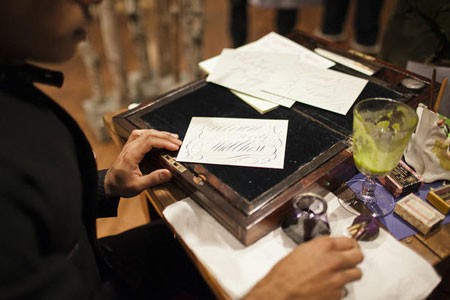The Art of Calligraphy Carving Out a Niche
When Rajiv Surendra meets new people in his travels who want to stay in touch, he has a key stipulation when it comes to exchanging messages: write them by hand and post them, no e-mailing!
“They’ll write to me and they’ll say: ‘This is the first letter I’ve ever written — but it’s fun,’” Surendra said with a laugh.
“I have a pile of letters at the end of the year, and sometimes, I flip through and open (them) up again. And it feels like that person is right there with me because their hand is on the paper and you can see it in their writing,” he added.
Surendra’s affinity for the art of handwriting was cultivated during childhood when he discovered letters from the mid-1800s and was struck by the beauty of penmanship.
“I just loved the way the letters looked,” he recalled fondly in an interview at Hart House at the University of Toronto, where he majored in art history and classics.
Surendra started to replicate the elaborate script with pencil and pen before discovering the historical tools that helped further propel his delicate pen strokes and fanciful flourishes into an art form. The self-taught calligrapher now has his own Toronto-based business, with the bulk of his work dedicated to addressing envelopes for wedding invitations.
 The bulk of the work involves addressing invitations and designing monograms
The bulk of the work involves addressing invitations and designing monogramsSurendra believes the increasing rarity of handwriting in a digital world is a prime reason why there’s still a place for calligraphy.
“It just so happens that we live in a time when billions of messages are sent by machines every day, so when you do get something by mail ... that has been beautifully written out by hand, it says something that the words on the page don’t say,” he said.
“It says, “I’ve taken the time and effort to stop what I’ve been doing, to sit down to tell you something on paper. And that’s why it’s so special.”
Source: thestar.com
Man′s beauty is in the beauty of his writing.



